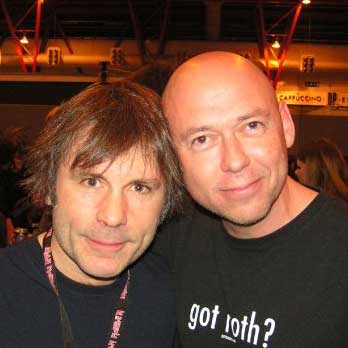‘Kill Bon Jovi’. That was the blunt message that Metallica frontman James Hetfield scrawled on his white Jackson guitar in 1987.
Hetfield had good reason to be pissed off. That year, during Metallica’s performance at the Monsters Of Rock festival at Donington Park, they were momentarily upstaged when a helicopter carrying Bon Jovi, the headline act, flew in over the audience. But for Hetfield, this wasn’t just about that one cheap stunt. The animosity went deeper than that.
When Metallica had started out in Los Angeles in 1981, their uncompromising music, super-fast and super-heavy, made them outcasts in a rock scene dominated by the glammed-up likes of Ratt and Motley Crue. Metallica relocated to San Francisco in 1982.
In the years that followed, as Metallica rose to prominence as the kings of thrash metal, leading a revolution in heavy music, Hetfield, in common with most Metallica fans, had nothing but contempt for all those big-haired pretty boys. All of which made Metallica’s choice of producer for their fifth album a shock to those diehard fans.
When it was announced in 1990 that Bob Rock would be producing the band, cries of ‘sell out’ quickly followed, for this was a guy who’d made his name working for the enemy – not only Motley Crue and Bon Jovi, but also other lightweights such as Loverboy. Many felt that Metallica had lost their minds, and their balls too. But it turned out that hiring Bob Rock was one of the smartest moves they ever made.
Metallica had reached a dead end with their 1988 album …And Justice For All. That album was so dark and convoluted, it seemed they could go no deeper. The band that had reinvented heavy metal on three groundbreaking 80s albums – Kill ’Em All, Ride The Lightning and Master Of Puppets – were now in need of their own reinvention. For Metallica’s reset, simplicity was key, and drummer Lars Ulrich explained that the inspiration had come from his obsession with another legendary band.
“In 1990 I spent six months listening only to AC/DC,” he said. “And it changed my entire approach to songwriting.”
As the new songs came together, Hetfield still harboured a nagging feeling that something was not right. “We wanted shorter songs that were meatier,” he recalled. “But I couldn’t help but think this is very easy to understand, very singable.”
But he need not have worried. That remit – shorter and meatier – was nailed in two monolithic songs: Enter Sandman and Sad But True. And in both, the influence of AC/DC was evident. Enter Sandman, based on a sinister-sounding riff from, had the measured power and epic feel of Hells Bells, the opening track of AC/DC’s Back In Black, while in Sad But True a crunchy, halting riff recalled that album’s title track.
There were also throwbacks to the glory days of thrash metal, in Holier Than Thou and Through The Never. And what was begun in 1984 with Fade To Black – in part, a rock ballad in the classic tradition – was developed in two songs with heavy emotional weight: The Unforgiven and Nothing Else Matters. Hetfield had felt conflicted about Nothing Else Matters.
“What was it about not wanting to write a love song?” he said. “That’s pretty easy. It’s a huge sign of weakness. You’re in Metallica. This is hardcore. What the fuck are you doing? But that song was for me. It’s about being on the road, missing someone at home. But it was written in such a way that it connected with so many people. It wasn’t just about two people. It was about a connection with your higher power, lots of different things.”
Equally personal to Hetfield, and again addressing the subject of belief in a higher power, were the words he sang in The God That Failed – in part a requiem for his mother Cynthia, who refused treatment for cancer because her religion forbade it, and died in 1979, when Hetfield was 16. Musically and lyrically, The God That Failed is one of the most powerful tracks on an album on which Metallica pushed the boundaries on every level.
The new album was titled simply Metallica. But with another echo of Back In Black in its cover – solid black, save for the faint outline of the Metallica logo and a coiled snake – it would forever be known as the Black Album. And just as Back In Black became AC/DC’s biggest record – moreover, the best-selling rock album of all time – so the Black Album would be Metallica’s greatest success. It hit No.1 all across the world.
To date it has sold more than 16 million in the US alone. And ultimately the controversy over Bob Rock was unfounded. The huge, deep sound of this album – illustrated most powerfully in Enter Sandman, the definitive 90s-metal anthem – was instrumental in Metallica becoming one of the biggest bands on the planet. And they didn’t have to play nice like Bon Jovi to get there.

